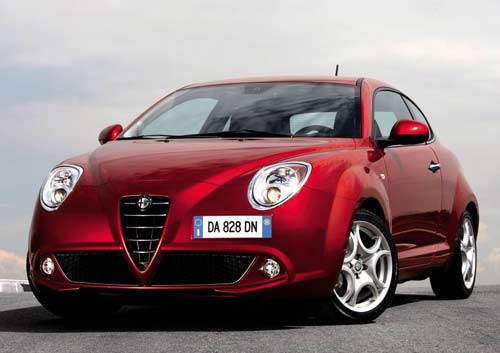Alfa Mito
Alfa advance takes engine technology to the next level. Something big lies under the MiTo's little bonnet

Most things that are likely to be invented have been by now, we sometimes think.
That's not to say there is nothing left, but we do suspect that future inventiveness will be more incremental than groundbreaking. Hold that thought: meet the MiTo in its latest form, and meet Alfa Romeo's new MultiAir engine.
This, no kidding, is the most fundamental advance in the history of the petrol-fuelled piston engine since the arrival of fuel injection during the Second World War. It is an engine whose inlet valves are no longer opened by a camshaft. Well, not directly anyway.
Never before in the history of human transport have little hydraulic pistons oscillated so fast and so continuously. That they can do this and survive in the heat of an engine is extraordinary. What, then, is the point?
I'm going to explain what MultiAir is and how it works. If you're not interested, you'll have to skip a few paragraphs to see what I think of the fastest, grandest MiTo MultiAir, the new Quadrifoglio Verde version for which an impressive 170 turbocharged bhp are extracted from just 1.4 litres.
An engine works best when the amount by which the inlet valves open, and the point in the four-stroke cycle at which they open and close, can be varied to suit the engine's needs at different speeds and levels of exertion. Variable valve timing has been used in one form or another for years to achieve this, and has reached its greatest level of sophistication with systems such as BMW's Valvetronic. This uses the valves themselves as the throttle instead of the usual air-flap connected to the accelerator pedal, but it's still a mechanical system and a complex one at that.
MultiAir is different. Four extra cams on the exhaust camshaft actuate four little hydraulic pistons, one per cylinder, and the oil these move in in turn operates the inlet valves (two per cylinder) via pairs of further hydraulic pistons. Fine; the oil is acting like a hydraulic linkage, but why go to the effort?
Because there's also an electric solenoid valve within that "linkage", which can bleed off controlled amounts of oil and thus alter both the timing and duration of the inlet valves' opening within the ultimate constraints of the actuating cam's shape. This they do very accurately and over wider limits than has ever been achieved before. So the engine can run fast or slow, pull hard or gently, have great urge at low speeds or rev vigorously like a sports-car engine, all by opening the solenoids accordingly.
It's even possible, at low speeds and under a light load, to open the inlet valves twice in one cycle and thus create a swirl of intake air better able to mix the fuel thoroughly for a cleaner, more complete burn. The system is all about using the fuel as efficiently as possible, and for a petrol-fuelled, 170bhp car to have CO2 emissions of just 139g/km along with 20,000-mile service intervals is quite an achievement.
It begs comparison with that other masterpiece of powerful downsizing, the VW Group's 1.4-litre engine with both a supercharger and a turbocharger, but it's yet more frugal and ultimately simpler. Carmakers have been experimenting for years to create a viable camshaftless valve-opening system for the flexibility it brings, and Fiat Auto (the engine will shortly also be launched in a revised Punto) has finally done it.
Does it work? It does. The £16,000 MiTo Quadrifoglio Verde is the best showcase: its engine proving powerful, smooth, sonorous and satisfying. It seems to do all that is promised of it – enjoyment enhanced in this top model by a slick six-speed gearbox plus adaptive damping which has the effect of sharpening the MiTo's usually rather rubbery responses, making the steering feel more natural and improving the ride over ridges. Bigger wheels and cloverleaf badges in green faux-carbonfibre complete the picture.
With this engine the MiTo becomes a fully-formed car of great technical intrigue and considerable emotive pull, but the cheaper 135bhp version is also an interesting prospect at just 129g/km. MultiAir is engine-downsizing at its most intelligent yet.
The Rivals
Mini Cooper S: from £16,575. Always a favourite, nowadays with 175bhp turbo 1.6 engine and as much frisky entertainment as ever. Avoid too-firm Sport suspension and wheels option.
Renaultsport Clio 200: from £15,750. Two litres and no turbo means a traditional route to an ample 200bhp. Cheaper Cup version is a purer driving machine but trim is basic.
Seat Ibiza Cupra: £15,995. The most powerful VW turbo/supercharged 1.4 at 180bhp, matched to looks and capable dynamics. Double-clutch sequential gearbox is obligatory.
Subscribe to Independent Premium to bookmark this article
Want to bookmark your favourite articles and stories to read or reference later? Start your Independent Premium subscription today.

Join our commenting forum
Join thought-provoking conversations, follow other Independent readers and see their replies